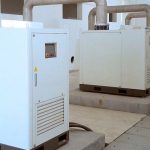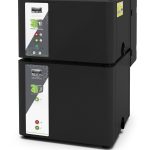In its latest report, Health and Safety Executive (HSE) noted a general reduction in the number of claims for work-related hearing loss over the last ten years. This could be down to the widespread use of ear protectors and other personal protective equipment (PPE), minimising the consequences of occupational noise. However, overusing PPE can lead to other problems, such as workers feeling alienated and being unable to communicate with each other and to hear safety alarms. Here Jonathan Wilkins, director at industrial automation parts supplier EU Automation, explains why reducing noise at the source is a better long-term solution.
Prolonged exposure to ear-splitting decibel levels can jeopardise the physical wellbeing of an individual. Interestingly, the complete absence of sounds can also be distressing. Sensory deprivation that includes isolation from sounds for extended periods is currently categorised by Amnesty International as white torture, since it may lead people to a deep feeling of isolation and ultimately to depression.
The impact of noise—both its excess and its complete absence—in the workplace can have serious consequences on workers’ wellbeing and must be accounted for by plant managers. Sound is not only a key factor in job satisfaction, but also a costly matter: the World Health Organisation estimates that the yearly cost to Europe from excessive noise is £30 billion, including healthcare expenses, sick leave and reduced productivity.
The traditional approach: PPE
Employers have a legal obligation under the Control of Noise at Work Regulations (2005) to safeguard the hearing of their employees. Disregarding this can lead to compensation for claims of industrial deafness, which results in loss of profit and reputation. To minimise this risk, the general tendency has been to overprescribe PPE, both in terms of how long they should be worn—generally every day, all day long—and in the isolation level they provide.
Using PPE has contributed to reducing job-related hearing loss claims of almost 50 per cent in the last ten years, but overusing them has several shortcomings. The main one is that ear protectors reduce workers’ ability to communicate with others, which can lead to a feeling of alienation and consequently poor job satisfaction. Another problem is that workers may be unable to hear fire alarms and other sounds that should alert them, such as those produced by an approaching vehicle. Lastly, with PPE there’s always the risk that workers might choose not to wear it for reasons of comfort and hygiene, or that they might fail to alert the manager if their PPE is broken or doesn’t fit properly.
Minimising noise at the source
To avoid the many shortcomings of ear protectors, the best thing is to try and control the noise produced by your equipment. Reducing noise at the source is not only a smart choice but also a legal requirement. The Control of Noise at Work Regulations (2005) determines in fact that employers should not only provide workers with appropriate personal hearing protection, but also act to reduce noise exposure in the first place.
There are many cost-effective ways of doing so and every business, no matter its size, should implement an appropriate noise control programme. The first step for creating one is conducting a comprehensive noise assessment survey to determine the noisiest areas of your facility and identify which employees are at risk of hearing damage.
Noisy machines can then be isolated in a variety of ways. Enclosing equipment is one of the most commonly used noise-reduction strategies in manufacturing. In an enclosure, air gaps must be reduced in number and size and any duct for fresh air and exhaust gases must be silenced. The enclosure’s walls should also be lined with sound-absorbing materials such as PVC sheets. Finally, plant managers should check barriers and enclosures regularly and schedule appropriate maintenance if needed.
However, the most effective tool for sound reduction is a low-noise purchasing policy. When purchasing a piece of equipment, noise data should be considered alongside other characteristics. Also, remember to ask your supplier about the best mounting techniques and locations for your equipment, so that it operates as quietly as possible.
Finally, manufacturers should perform proper and regular maintenance of their machinery that takes noise into account. It can be necessary to upgrade equipment or substitute parts of it, since worn out materials or loose cables often produce excessive vibration.
Being at work shouldn’t be a torture and workers shouldn’t have to choose between ear-splitting noise or alienating ear protectors. With the right sound-control method, noise can be effectively kept under control without compromising on your employees’ safety and comfort.
EU Automation supplies a range of new and obsolete parts that can help you upgrade your equipment for a quieter and safer workplace. They can be contacted on +44 (0) 1785 30 33 00 or via their website.




